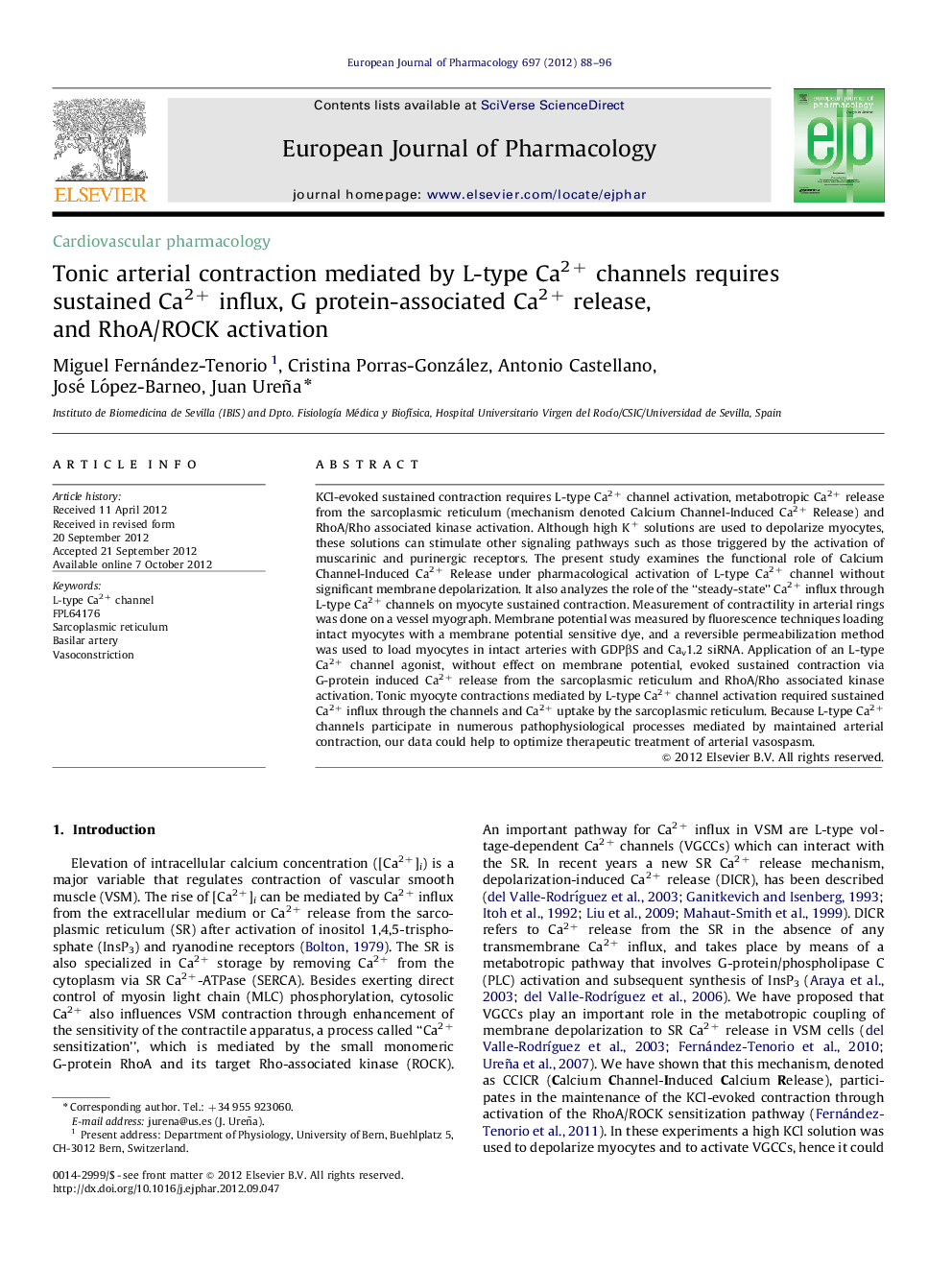| Article ID | Journal | Published Year | Pages | File Type |
|---|---|---|---|---|
| 5829244 | European Journal of Pharmacology | 2012 | 9 Pages |
Abstract
KCl-evoked sustained contraction requires L-type Ca2+ channel activation, metabotropic Ca2+ release from the sarcoplasmic reticulum (mechanism denoted Calcium Channel-Induced Ca2+ Release) and RhoA/Rho associated kinase activation. Although high K+ solutions are used to depolarize myocytes, these solutions can stimulate other signaling pathways such as those triggered by the activation of muscarinic and purinergic receptors. The present study examines the functional role of Calcium Channel-Induced Ca2+ Release under pharmacological activation of L-type Ca2+ channel without significant membrane depolarization. It also analyzes the role of the “steady-state” Ca2+ influx through L-type Ca2+ channels on myocyte sustained contraction. Measurement of contractility in arterial rings was done on a vessel myograph. Membrane potential was measured by fluorescence techniques loading intact myocytes with a membrane potential sensitive dye, and a reversible permeabilization method was used to load myocytes in intact arteries with GDPβS and Cav1.2 siRNA. Application of an L-type Ca2+ channel agonist, without effect on membrane potential, evoked sustained contraction via G-protein induced Ca2+ release from the sarcoplasmic reticulum and RhoA/Rho associated kinase activation. Tonic myocyte contractions mediated by L-type Ca2+ channel activation required sustained Ca2+ influx through the channels and Ca2+ uptake by the sarcoplasmic reticulum. Because L-type Ca2+ channels participate in numerous pathophysiological processes mediated by maintained arterial contraction, our data could help to optimize therapeutic treatment of arterial vasospasm.
Related Topics
Life Sciences
Neuroscience
Cellular and Molecular Neuroscience
Authors
Miguel Fernández-Tenorio, Cristina Porras-González, Antonio Castellano, José López-Barneo, Juan Ureña,
